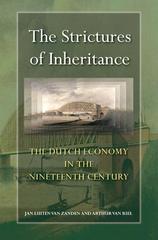Assap tutors
5. (20) Consider the discrete time, infinite horizon monetary-search model we saw in class. Each period is divided into two subperiods. In the day, trade is bilateral and anonymous. At night trade takes place in a standard perfectly competitive market. There are two types of agents, buyers and sellers, and the measure of both is normalized to the unit. The per period utility for buyers is u(q) + U(X) - H, and for sellers it is -q + U(X) - H, where q is the quantity of the day good (consumed by the buyer and produced by the seller), X is consumption of the night good (i.e. the numeraire), and H is hours worked in the night market. We make some standard assumptions: u, U are twice continuously differentiable with "(0) = 0, u' > 0, u'(0) = 00, u'(co) = 0, U' > 0, u" 8 -1. New money is introduced (or withdrawn if 0 denote the erogenous credit limit that a buyer can use in order to purchase q from a seller. This credit takes the form of a (credible) promise to repay the seller with numeraire good in the forthcoming night market (sometimes referred to as an IOU)." As an example, consider a meeting between a buyer and a seller, and suppose that the two parties have agreed that a quantity q of the day good will be produced, in return for a payment equal to , measured in terms of the numeraire. Then, the buyer can pay the seller with any combination of credit, d, and (real) dollars, z, such that d + 2 = x, subject to the constraint that the credit limit is not violated, i.e. d s D. Intuition: Summing up, here we study a model where money and credit compete as means of payment. It is important to understand that in this model credit has an advantage over money: if an agent wants to use money, she must bring it with her from the previous period and pay the holding cost (nominal interest rate), while she is not even certain that she will need it. In contrast, the buyer can use the credit only after she finds out that she has matched with a seller. Hence, credit sounds like a much better deal, except that, for reasons that we will not discuss here, it is limited. (a) Describe the value function of the typical buyer and seller in the night market (recall that these agents do not only carry money, as in the baseline model, but they might also have some debt/credit from the preceding round of trade, and this should show up as a state variable in their value function). (b) Describe the terms of trade in the day market (recall that the buyer makes a TIOLI offer). (c) Describe the objective function of the typical buyer. Hint: There is no need to derive the objective function formally. Full credit will be given if you "guess" it correctly. (d) Suppose that D 2 q". What do equilibrium real balances (of money), z, look like? (e) Suppose that D







